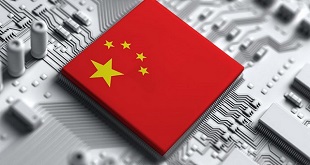
In the first approach, fish farms would be moved from the ocean to recirculating aquaculture systems (RAS), in which fish are housed in indoor tanks that are regulated by pumps, heaters, aerators, and filters. One of the biggest advantages of this approach is its adaptability: an RAS can be located almost anywhere; from urban lots to retired hog barns.
Better yet, these systems are designed to recycle nearly all of the water they use, which eliminates the problem of coastal pollution. Accordingly, the advocacy organization Seafood Watch currently gives all RAS-farmed fish a “Best Choice” tag.
The other option is to move aquaculture in the opposite direction: out to sea. Offshore systems harness the forces of the ocean, by using deeper waters and stronger currents to funnel excess nutrients and waste away from sensitive coastal ecosystems. As a result, they have no need for mechanical pumps or filters (although motorized pens may eventually take to the seas).
In the United States, the aquaculture industry has started to move toward RAS production. For example, a Norwegian firm has just announced plans to build a huge new land-based salmon farm in Maine. And examples of offshore projects can be found off the coasts of Norway, California, and Hawaii. But both systems are still a niche, rather than the norm.
One of the primary problems with cleaner approaches to aquaculture is that they are energy-intensive. With land-based systems, natural processes such as filtration and water exchange and dispersal must be carried out mechanically, which requires a lot of electricity. That isn’t necessarily a problem in places with low-carbon electricity grids, like France, but it would be in a place like Nova Scotia, which relies heavily on coal.
Likewise, offshore operations require diesel fuel for transport and maintenance, and that will remain the case until electric boats or low-carbon liquid fuels become more viable. Although open-ocean aquaculture should still require less diesel fuel than commercial fishing – and could run on renewable energy sources like solar, wind, or waves – offshore aquaculture is more energy-intensive than conventional fish farms.
And even if newer aquaculture systems can overcome their current operational and regulatory challenges, their biggest hurdle will be the unavailability of cheap, low-carbon energy. As long as fossil fuels account for most global energy use, the environmental promise of next-generation aquaculture will go unrealized.
This is true for a wide range of industries. Without cleaner and cheaper energy across the board, we will not be able to meet our broader environmental and climate goals.
Our current energy technologies – nuclear and renewables included – still have a way to go to meet energy demand. In the meantime, the aquaculture industry will need to make further investments and develop new innovations to put itself on a path to sustainability – be it on land or in the sea.
****
Linus Blomqvist is Director of the Conservation Programme and the Food and Farming Programme at the Breakthrough Institute
Copyright: Project Syndicate, 2018
 The Independent Uganda: You get the Truth we Pay the Price
The Independent Uganda: You get the Truth we Pay the Price



see alphalapia.com to get even more information about fish farm businesses
Great content, thanks.